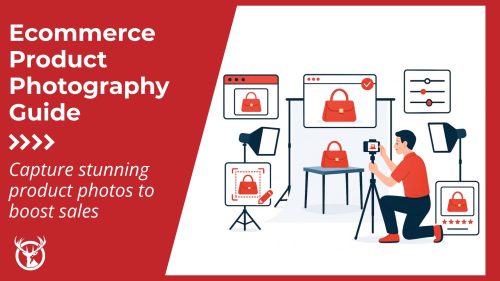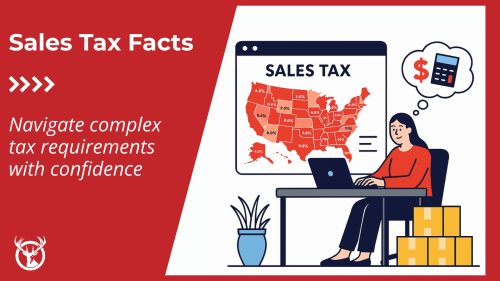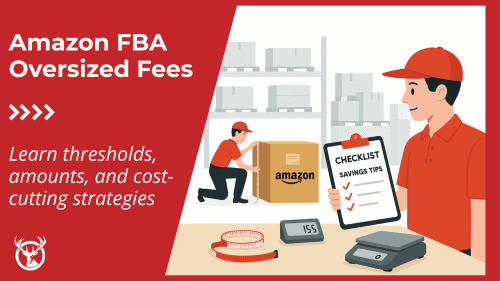ShipStation is a web-based shipping platform that helps businesses manage their small parcel shipping and e-commerce fulfillment. It’s how you can get products and purchases to your customers, though it often won’t help with managing your inbound inventory if you are shipping at freight levels. This is a SaaS (software-as-a-service) solution, so you won’t need specific hardware or installations to use it.
You’ll pay a monthly fee based on shipment volume and other factors.
In the U.S., ShipStation is a growing tool that many small businesses use as they scale up their operations. So, we’ll take a quick look at it, discuss if it might be right for you, and uncover any concerns that its customers express.
What are the core ShipStation features?
ShipStation is designed to work with your existing e-commerce business and some software to help make it easy for you to manage and ship orders. So, the service has five critical areas of features and tools designed to make those actions easier and better for a business:
- Order Management
ShipStation says it integrates with more than 70 sales channels to help companies manage orders in an omnichannel way. You get a single dashboard to review and adjust, relying on ShipStation to create a single picture of your company. The tool can be set up to automate a variety of actions in general and specific to different channels based on inventory thresholds and order details.
A nice feature here is the ability to split orders across multiple warehouses, helping you fill them faster.
- Shipping
When you do get an order and are ready to ship, ShipStation helps you control that process. It’ll give you access to multiple carriers and rates, select shipping discounts, and print labels for you. Shipping documents are automatically generated and attached to the order within your system. If you need to contact a customer, the platform links their information to each order.
ShipStation includes order verification, so your team will need to scan items as they are added to orders and picked and packed. This helps ensure your accuracy and can improve customer service. Red Stag Fulfillment utilizes multiple scanning and verification tools to ensure our guaranteed high accuracy rate.
- Branding
Branding is a core way for e-commerce brands to stand out. ShipStation and similar services typically offer some branding elements to help you create a unique look and feel. The ShipStation focus is creating tracking pages and returns portals branded for your company always to have your logo available. You can also use it to send branded emails for customer interactions and print your logo and details on shipping labels and packing slips.
- Inventory Management
Many e-commerce platforms are designed to help you control inventory because that reduces the number of tools you need to use each day. ShipStation is no exception, offering a computer and smartphone platform to help you track inventory amounts. Its tools include the ability to view your stock levels, reserve inventory for specific orders, and set inventory alerts, so you get a notice before you run low.
You can train ShipStation on your warehouse layout so that pick orders and packaging slips contain inventory locations, making it easier for people to move orderly through a warehouse and pick faster.
- Integration
A core requirement for e-commerce tools — and all the tools you use to run your business — needs to be the ability to integrate and work with multiple partners or programs. ShipStation counts some of the biggest names in US e-commerce, so you’ll likely be able to use your preferred systems still. Its integrations include marketplaces, seller locations, shopping cart tools, stores, carriers, and many third-party plugins or design services.
See its list of hundreds of partners here.
Where does ShipStation reach?
ShipStation allows seller accounts for companies operating in the United States, Canada, the United Kingdom, and Australia. Its system integrates with carriers in these countries to help you ship goods to customers.
Support beyond these countries is mixed because it generally requires third-party integrations or tools. So, you might be able to reach customers further away if you use a trusted 3PL that integrates with ShipStation or if you use Fulfillment by Amazon. The platform also supports dropshipping models, so you might be able to work directly with a reseller to expand your product reach.
Remember that these outside relationships will come with their own technical requirements, and you’ll be responsible for the compliance, regulations, and other concerns.
Is ShipStation easy to use?
This question is subjective and can change based on your experience, but reviews of ShipStation are generally positive. Users like how it simplifies several aspects of fulfillment and can make it easy to communicate with their partners and customers. The dashboard is simple but effective.
The most common complaint we’ve seen around ShipStation is that integrations can be complicated and sometimes the costs here are more than people expected. This bleeds over into some marketplace and sales channel integrations where order errors or inaccuracies can be hard to pinpoint because of how the system handles labels and other pre-printed items, according to customers. Manual orders and corrections seem to be the biggest concern and culprit here.
ShipStation has improved its usability by expanding its customer service channels — previously a chief customer concern — but you have to pay more for the kind of support that would be helpful when something goes wrong. So, let’s look at costs and discuss why its cheaper options typically won’t be worthwhile for an e-commerce business.
How much does ShipStation cost?
ShipStation currently has 6 preset pricing options, but you’ll need to contact the service if you send more than 10,000 shipments each month. It’s important to note that your shipping plan will automatically be upgraded to the next tier if you exceed your shipment volume at any time.
The main differences among pricing are the total shipments it supports, how many different users can access your software and the level of support you get. The more you pay for, the higher number of each you get. If you’re going to rely on ShipStation to manage your business, it can be worth paying for more shipments than you’ll need if the next price point gives you additional customer support tools.
Recent reviews of the service are mixed for its forums and email support; however, people are generally satisfied with its live chat and phone support when they pay for the higher tiers.
Every package gives you access to USPS discounts that ShipStation offers as well as other carrier options and integrations. There are few fees, and users aren’t reporting any surprises when it comes to billing. The one thing to note is that ShipStation lists some channels as “Premium Integrations,” and you will have to pay for those separately. Some of these premium options include Seller Fulfilled Prime, and its price increase may add up for you.
Is there an app?
Many of your interactions with ShipStation will happen at workstations because the platform is generally easier to manage on a bigger screen. However, the service does come with a full-featured app that allows you to see inventory levels quickly, manage orders, make shipments, and communicate with customers.
One benefit of the app is that you’ll get push notifications for important events, such as low inventory levels. You can use its app to scan barcodes or email return labels to people and even send orders to fulfillment partners.
Who is a good fit for ShipStation?
ShipStation seems especially well suited for growing e-commerce businesses, especially if you’re starting to expand with more orders and multiple warehouses — or you work with a 3PL that has multiple fulfillment locations. You’ll get the most out of it if you’re sending at least a few hundred orders each month, and it’ll keep up as you scale into the low 1,000s. There’s a big focus on simplicity and automation, so companies with smaller teams should be well served, too.
You might want to consider an alternative as you get larger or if your shipments often use air, ocean, or freight options. Companies with a lot of international orders say that, while ShipStation supports their needs, things can be complicated to track, and issues can arise. If you rely on your own fleet, employ cross-docking, or use a lot of RFID tags for management, you also may not find all the supported features you want.Red Stag Fulfillment works with companies like yours to find the right solution for your shipping and logistics needs, even if it isn’t us. Reach out, and we’ll have a quick conversation to help you understand if us, ShipStation, or someone else might be your best fit.











